After the second rotation on Broad Peak, I hoped we’d get a day rest. Resting a day in base camp after sleeping in the high camps helps a lot with acclimatization. Not to mention on the way up a rock rolled under me and I hurt my left knee. Luckily it got better after the rest in camp 1, but it’s still not good. Letting it recover would’ve been nice.

Except the weather forecast had other plans. There wasn’t enough time anymore to waste: snow was coming, and probably to stay too for weeks. Which meant we only had this one chance to move for the summit. Those who wanted a rest in camp 1 would start the next day, while those who were okay with the long way straight to camp 2 would get a day.
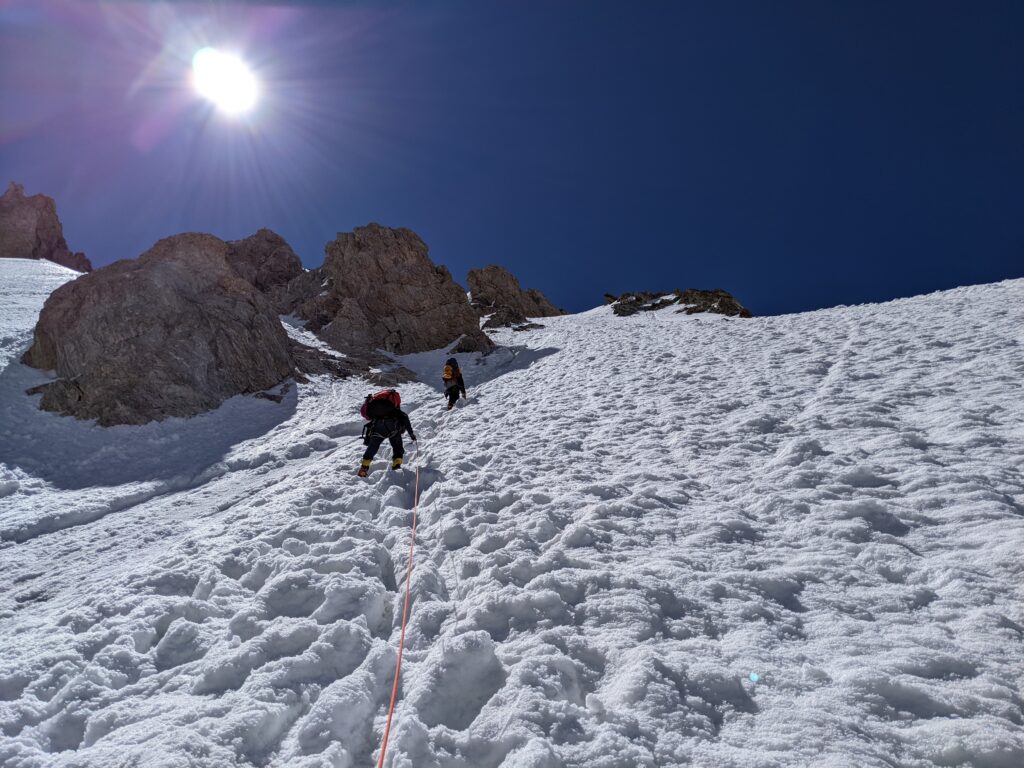
I decided to go to camp 1 first, because I felt that while climbing to camp 2 straight is possible, it’d tire me too much considering we’d have to move on to camp 3 and then the summit as well. Already on the second rotation the climb to camp 1 felt easy, so I wasn’t worried about that. We started super early from base camp to avoid the heat and the snowmelt, so we were in camp 1 roasting in the sun (or boiling in our tents) in the morning already. Much to my surprise I heard Hungarian words from the next tent: Klein David, a veteran climber was also on the mountain (I had no idea).
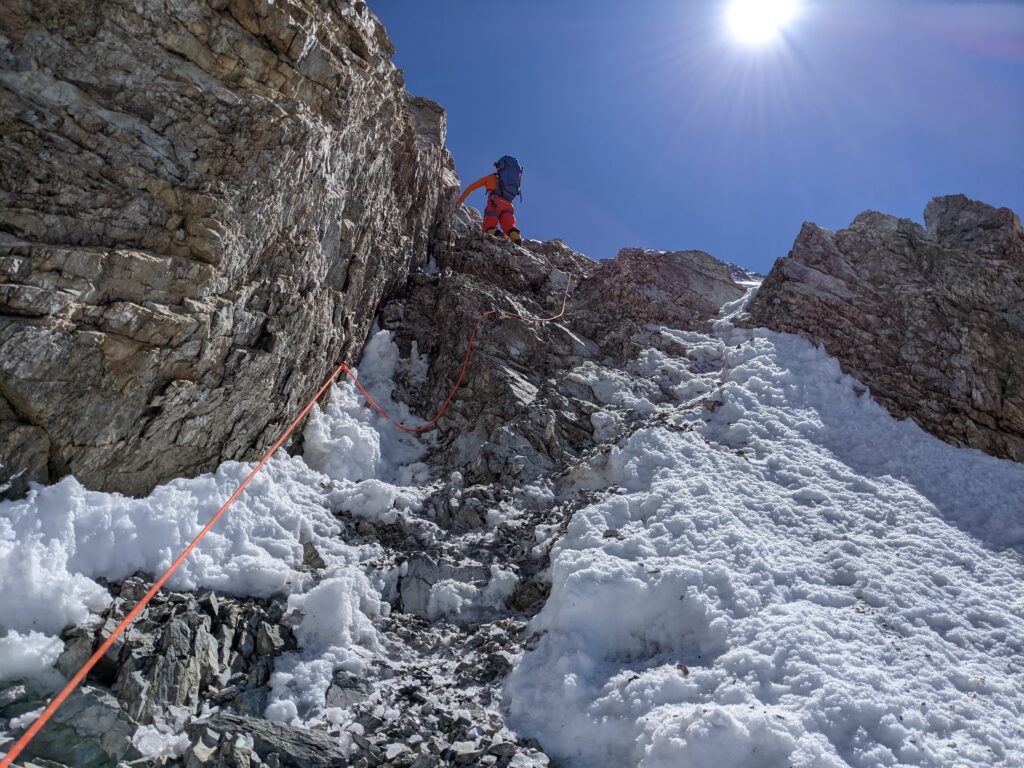
Next morning we once again started early to avoid the heat, and climbed to camp 2. Because of the repeated melt and freeze, the route felt much more difficult. More ice, more (super fragile and weak) rocks, less snow. This was the only part of the climb where I wanted to use my ice axe. Even so the climb took less time (thanks acclimatization), so I was chilling in camp before noon. There was some confusion about who goes in which tent with who (our guides refusing to organize it), but of course there was enough space for everyone, so I wasn’t left without roof.

Here already some people decided or were told to turn around. I was by no means the strongest member on the team, but climbing to camp 2 wasn’t even tiring anymore, so I was really confused why some people decided to give up without even reaching camp 3. I guess not everyone’s body adjusted well enough…
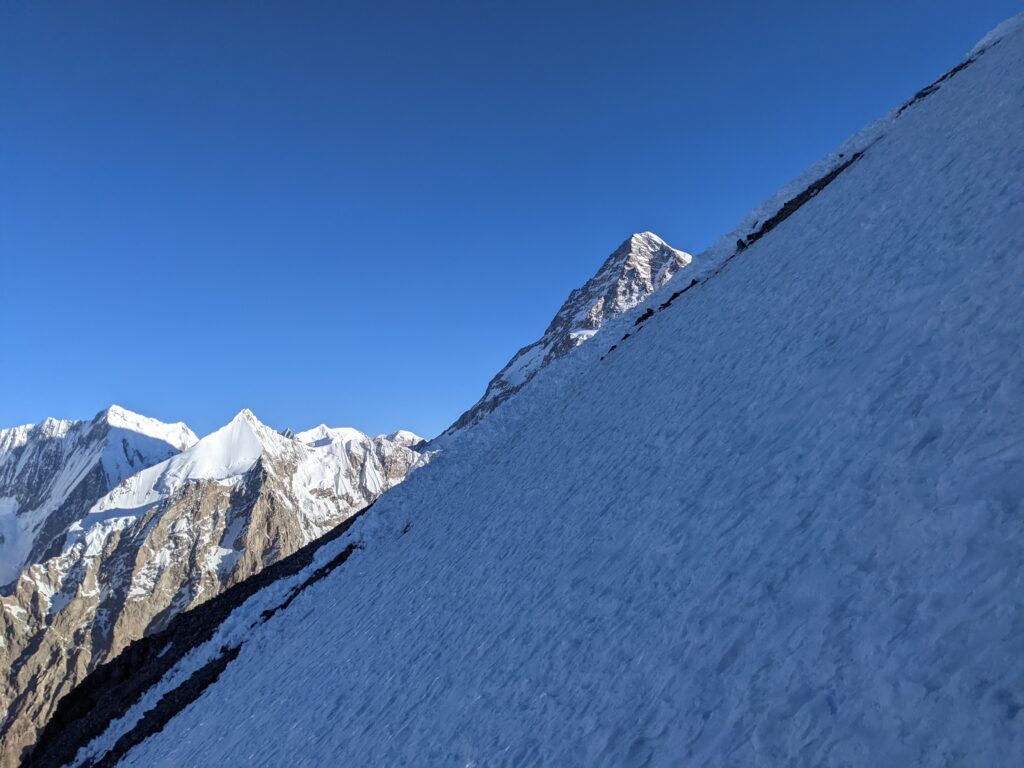
The climb to camp 3 was new terrain. Naturally we started before the sun hit the slopes. A guide recommended wearing the down suit instead of carrying it, so I tried that, but in 20 minutes I was already overheating (even without the sun), so I quickly (as quickly as possible) shed it and stuffed it in my backpack. Which now weighed a bit more than I was happy about, with my sleeping bag and everything.
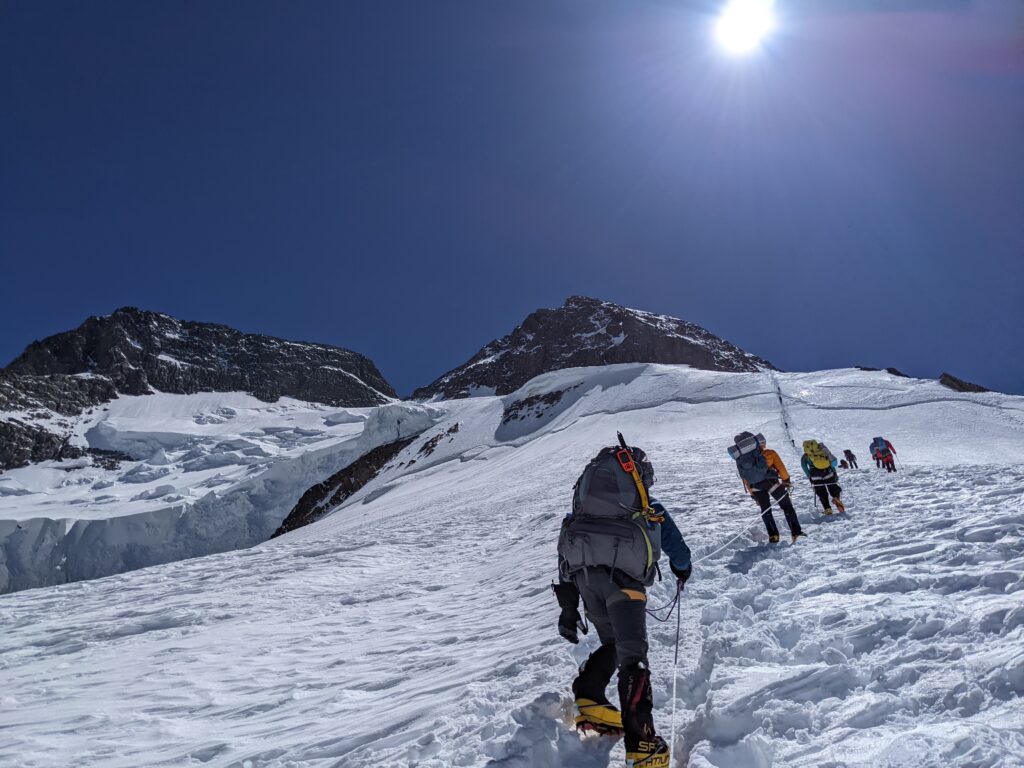
The climb itself was very long. Start with an icy-snowy slope into a rocky, steep area (with scary amounts of ice and rockfall), into a super long and quite steep snowy climb, this time with the included “fun” of the occasional crevasse. Of course we had the fixed ropes for safety, but it’s still scary to step over a huge gap in the ice…
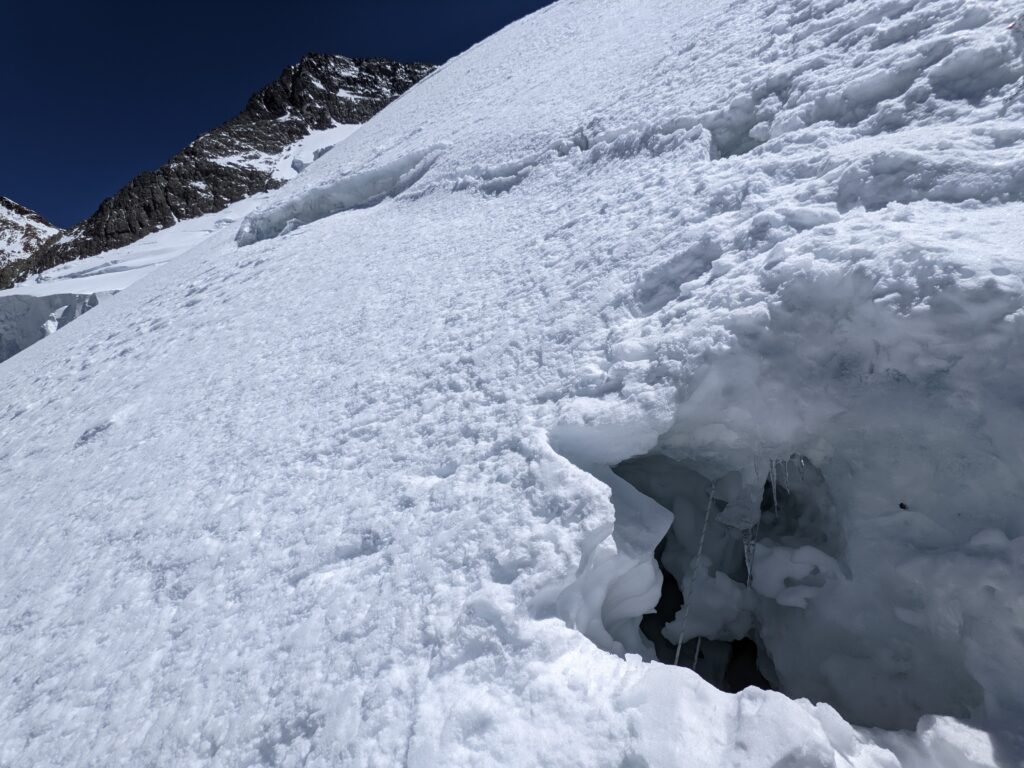
It took almost seven hours to reach camp 3, which was almost as much as the combined time from base camp to camp 2, but still less than the 8 hours some people on the team were talking about. Camp 3 being almost at 7000m altitude (possibly as high as the summit of Aconcagua), even in the middle of the day it was so cold that I was climbing wearing my warm hat, buff and light down jacket (in comparison I climbed to camp 2 in one light shirt).
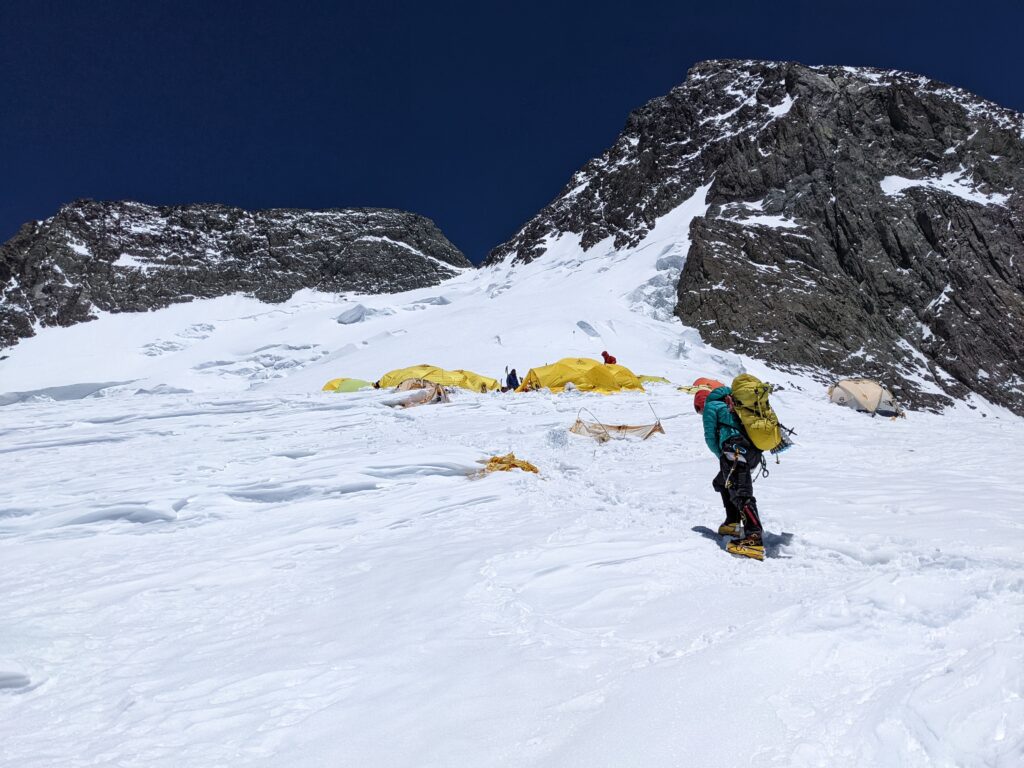

Az egyik korábbi blogodnál írtam is neked, hogy vannak magyarok is a hegyen. Gondolom, nem nagyon volt módod a kommenteket olvasni. S váltottál is velük szót?